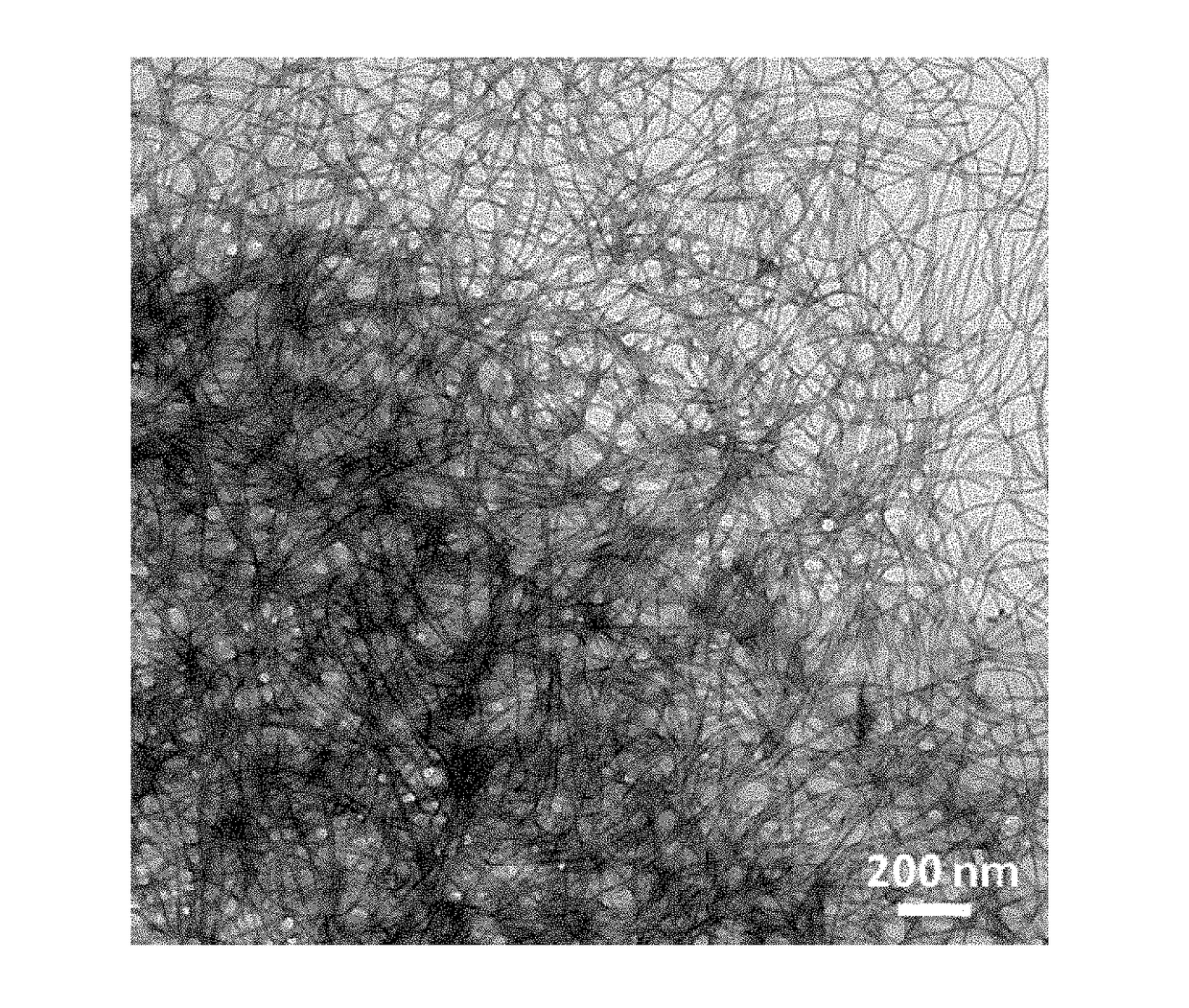Compositions and methods relating to living supramolecular polymerization and polymers
a supramolecular monomer and polymerization technology, applied in the field of supramolecular polymerization, can solve the problems that the strategy of living supramolecular monomerization has not been used, and the supramolecular monomer may only be applicable in living, and achieves the effect of great flexibility
- Summary
- Abstract
- Description
- Claims
- Application Information
AI Technical Summary
Benefits of technology
Problems solved by technology
Method used
Image
Examples
example 1
Supramolecular Polymerization of the Two-Component System Involving Complex 1 and PEG45-b-PAA69 (Entry No. 1 in Table 1).
[0162]Supramolecular polymerization of complex 1 and PEG45-b-PAA69 (the subscript represents the degree of polymerization of each block) was performed by mixing them in aqueous solution and then incubating the mixture for 1 day. The concentrations of small-molecule complex 1 and carboxylic acid in the mixture were 0.15 mM and 1 mM, respectively. The pH value of the mixture was 5, where the carboxylic acid groups were partially deprotonated. PEG-b-PAA interacted with complex 1 via electrostatic attraction.
[0163]The two-component supramolecular polymers obtained are nanofibers with an average diameter of 10 nm and a length of several micrometers under TEM observation (FIG. 10). As a control, neither an aqueous solution containing small-molecule component, complex 1, alone, nor an aqueous solution containing polymer component, PEG45-b-PAA69, alone, can form nanofiber...
example 2
Time Course of Supramolecular Polymerization of the Two-Component System Involving Complex 1 and PEG45-b-PAA69 (Entry No. 1 in Table 1).
[0167]Upon mixing of small-molecule complex 1 and polymer component, PEG45-b-PAA69, nanoaggregates of the two-component system with sizes of approximately 10 nm were formed, as evidenced by TEM observation (FIG. 13). After standing at room temperature for 1 h, nanofibers with an average diameter of 10 nm and an average length of 440 nm were formed (FIG. 14). After 12 h, the length of nanofibers increased to micrometers (FIG. 15). After 1-day incubation, nanofibers with diameter of 10 nm and length of several micrometers were formed (FIG. 10). The lengths of the nanofibers increased progressively with time, while the diameters of the nanofibers were kept constant. In view of the fact that nanofibers have a crystalline structure formed by ordered packing of the small-molecule platinum(II) complexes, the two-component supramolecular polymerization was ...
example 3
Length Control of the Two-Component Supramolecular Polymers by Complex / Polymer Feed Ratios (Entry Nos. 1-4 in Table 1).
[0168]The two-component supramolecular polymers were prepared by mixing small-molecule complex 1 with PEG45-b-PAA69 in an aqueous solution, and then allowed to undergo incubation for 1 day. The two-component supramolecular polymers formed were observed by TEM. For the mixture with complex / carboxylic acid molar ratio of 0.015 / 1, the nanofibers formed are not quite regular, with an average length of 340 nm (FIG. 16). For the mixture with complex / carboxylic acid molar ratio of 0.06 / 1, the nanofibers have a length of 520 nm and diameter of 10 nm (FIG. 17). For the mixture with complex / carboxylic acid molar ratio of 0.12 / 1, the nanofibers have a length of several micrometers and diameter of 10 nm (FIG. 18). Taking entry nos. 1-4 of Table 1 into consideration, it appeared that increasing the relative amount of the small-molecule complex (or square-planar small molecule) t...
PUM
| Property | Measurement | Unit |
|---|---|---|
| molecular weight | aaaaa | aaaaa |
| width | aaaaa | aaaaa |
| weight average molecular weight | aaaaa | aaaaa |
Abstract
Description
Claims
Application Information
 Login to View More
Login to View More - R&D
- Intellectual Property
- Life Sciences
- Materials
- Tech Scout
- Unparalleled Data Quality
- Higher Quality Content
- 60% Fewer Hallucinations
Browse by: Latest US Patents, China's latest patents, Technical Efficacy Thesaurus, Application Domain, Technology Topic, Popular Technical Reports.
© 2025 PatSnap. All rights reserved.Legal|Privacy policy|Modern Slavery Act Transparency Statement|Sitemap|About US| Contact US: help@patsnap.com



